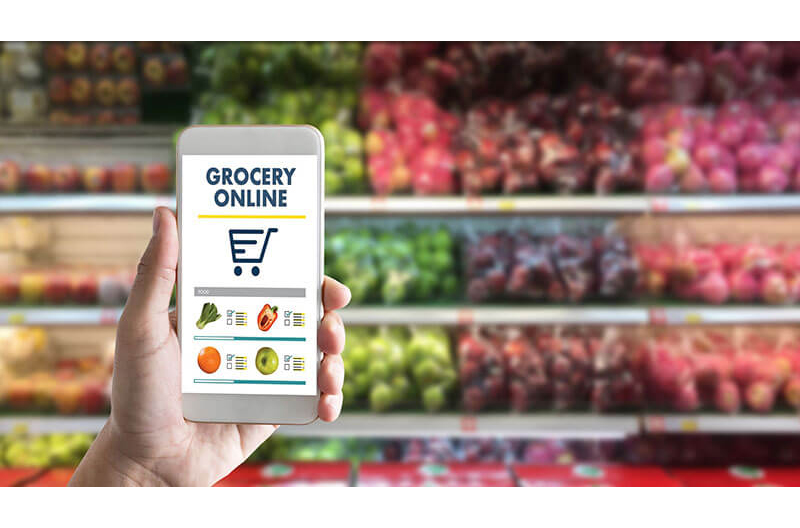FMI, the Food Industry Association recently presented its “Navigating A Hybrid World” as part of its U.S. Grocery Shopper Trends 2022 series. The third edition of the series, the June 9 presentation focused on how retailers and consumers are adapting and utilizing both in-store and online shopping techniques in the post-pandemic market.
“This year’s trends research tracks shopper attitudes and behaviors, and it has a particular focus on the hybrid shopper and how Americans’ food shopping experiences are being influenced by the complexities of pandemic realities and the broader economic inflation,” said Nick Palladino, VP of communications for Marathon Strategies, which provides third party public affairs services for FMI and played host to the presentation.
In the research provided by FMI, it reported that in 2015 online shopping users ordering groceries online within the previous 30 days of the study was only 7 percent of the consumers surveyed. In its most recent survey, FMI reported that half of online shoppers reported they shop online every two weeks or more, which is an increase of 629 percent.

Initial reports from FMI state that as the population moves further away from the COVID-19 pandemic, consumers are becoming less concerned about the health risks related to the now endemic coronavirus and are more concerned about rising food prices and availability. But according to Heather Garlich, FMI’s SVP of communications, marketing and consumer and community affairs, consumers are finding solutions.
Currently, households are spending approximately 4 percent more or about $148 per week than they were this time in 2021, which is below the pandemic height of about $161 per week.
“It suggests that early in the pandemic, increased spending seemed less dramatic, as it was offset by reductions in spending elsewhere. However, the smaller increases have been felt more acutely coinciding with newer concerns about rising food prices,” Garlich said at the beginning of the presentation.
Overall, 59 percent of consumers surveyed report spending more on groceries than they did a year ago. Garlich warned that these increased prices are probably not going anywhere anytime soon.
“Given the ongoing volatility in energy commodity costs, it might take a while for the price of food to come back down,” she said.
Garlich said customers are adapting around these increasing costs by buying items only when they’re on sale; purchasing more frozen and canned meats, seafood, produce and vegetables; switching to store brands or buying in bulk. These mostly pertain to families who are under the $40,000 annual income level.
“As you might imagine, the shoppers that are most impacted by increased prices are those with incomes under $40,000 a year. So, we have to be sensitive to that. But the pandemic has also taught us that shoppers are resilient and they’re adaptable… They’re looking for more deals,” Garlich said.
E-commerce became very popular during the pandemic, as many grocery stores clamored to make it available for their customers. The shift was initially made for safety reasons but has maintained due to e-commerce’s convenience and value. As shoppers can now see their totals before they reach the checkout counter, they feel more control. This provides consumers with the opportunity to eliminate unnecessary purchases and have an easier time staying within their budgets.
The convenience shoppers experienced with delivery and grocery pickup has continued. However, FMI sees in its study that these conveniences shoppers enjoy come with a price. While e-commerce allows shoppers many allowances, it also gives away some control of the shopping experience to outsider actors.
“Despite the many advantages, the rise in popularity of online ordering has forced shoppers to cede some control in terms of being able to touch and choose items themselves,” Leslie G. Sarasin, president and CEO of FMI, said in a press release following the report’s presentation. “Nearly half of shoppers (43 percent) believe they get better quality products when they shop in-store, as opposed to just 17 percent who believe the same about online shopping. Even those who shop online at least some of the time said that 70 percent of their grocery trips are done in-person.”
Despite the tradeoffs, online food shopping remains above pre-pandemic levels.
Along with increased shopping options, the use of retailer related apps have increased in popularity. These apps not only provide simple tools such as keeping track of shopping cart costs during an in-store visit but they also can provide product recommendations, help locate items within larger stores and notify customers of deals or provide coupons or other promotional materials.
“The expansion of hybrid shopping presents retailers with a variety of exciting opportunities to better engage with consumers by improving and streaming the overall shopping experience both online and in stores,” the FMI press release stated.
Retailers’ apps aren’t the only online influence vying for consumers’ attention. According to FMI’s survey findings, social media is playing a larger role than ever in customer’s decisions. Third party apps that utilize digital planning tools and social media are not only helping shoppers buy more efficiently but also are telling them what to buy.
“What we’ve seen in terms of shoppable content online is blogs, websites (and) social media are powerful tools that provide a high level of engagement for shoppers and personalized content that drives inspiration for meals and recipes,” Garlich said during the presentation.
The organization’s survey found that approximately 59 percent of shoppers participate in one or more food-related activities on social media, 29 percent use social media to gain ideas of what to cook or eat, and 45 percent of online shoppers say they enjoy grocery shopping as opposed to 27 percent who don’t shop online.
As hybrid shopping becomes more prevalent in today’s shopping environment, the retail landscape is shifting shoppers’ expectations and standards across the total shopper journey, providing new ways for retailers to engage with shoppers. Although digital tools have made shoppers’ lives easier and made shopping more convenient, the rise in popularity of online ordering has taken away control and that sensory experience of shopping in store.
“The expansion of hybrid shopping presents retailers with a variety of exciting opportunities to engage with consumers in new and different ways by improving and streamlining the e-commerce shopping experience both online and in stores,” Doug Baker, VP of industry relations at FMI, said in the closing remarks of the presentation.
For more information, visit fmi.org.

